Special Report
Quirky Foods Invented Since 1920

Published:
Last Updated:

How particular is your palate? Would you be willing to try a food that’s out of the ordinary? What do you identify as a quirky food?
24/7 Wall St. tracked down what we thought were the quirkiest foods invented both accidentally and intentionally since the 1920s. We noticed that each decade has a unique theme of these so-called quirky foods.
For example, the Great Depression era of the 1930s features a pie that requires minimal ingredients and no oven. Also in this decade you’ll find Spam, a cheap canned meat. The overarching theme? Hard economic times brought about simple recipes and cheap canned goods to cut food costs.
Click here to see quirky foods invented in the decade you were born.
The 1940s is the last decade to include quirky recipes. From that point on it’s all packaged and processed goods, with the exception of the 2000s and beyond, which introduces hybrids of vegetables and even pastries.
As you reminisce on your favorite childhood goodies, you may chuckle comparing the foods considered quirky then to the ones that are idiosyncratic now. Oh how the times have changed!
To identify quirky foods invented since 1920, 24/7 Wall St. reviewed multiple sources and found foods we deemed quirky starting from the 1920s to the present decade. We classify a food as quirky if it has an eccentric origin or offbeat story behind its inception, a funky mix of ingredients, a unique presentation, and distinct savor.
1920s

1. Popsicles
Summertime childhood memories may include running through the sprinkler, drawing pictures on the sidewalk with chalk, and cooling off with an ice-cold popsicle.
This sweet treat continues to be a hit today, and while it may not be considered quirky, its origin is a different story. In 1905, 11-year-old Frank Epperson from San Francisco accidentally invented the sweet treat by leaving a batch of sugary soda powder and water out on a chilly night. He called his invention an Epsicle, and by 1923 he expanded sales beyond his neighborhood, receiving a patent just one year later for — what his children encouraged him to name the treat — the popsicle.
[in-text-ad]
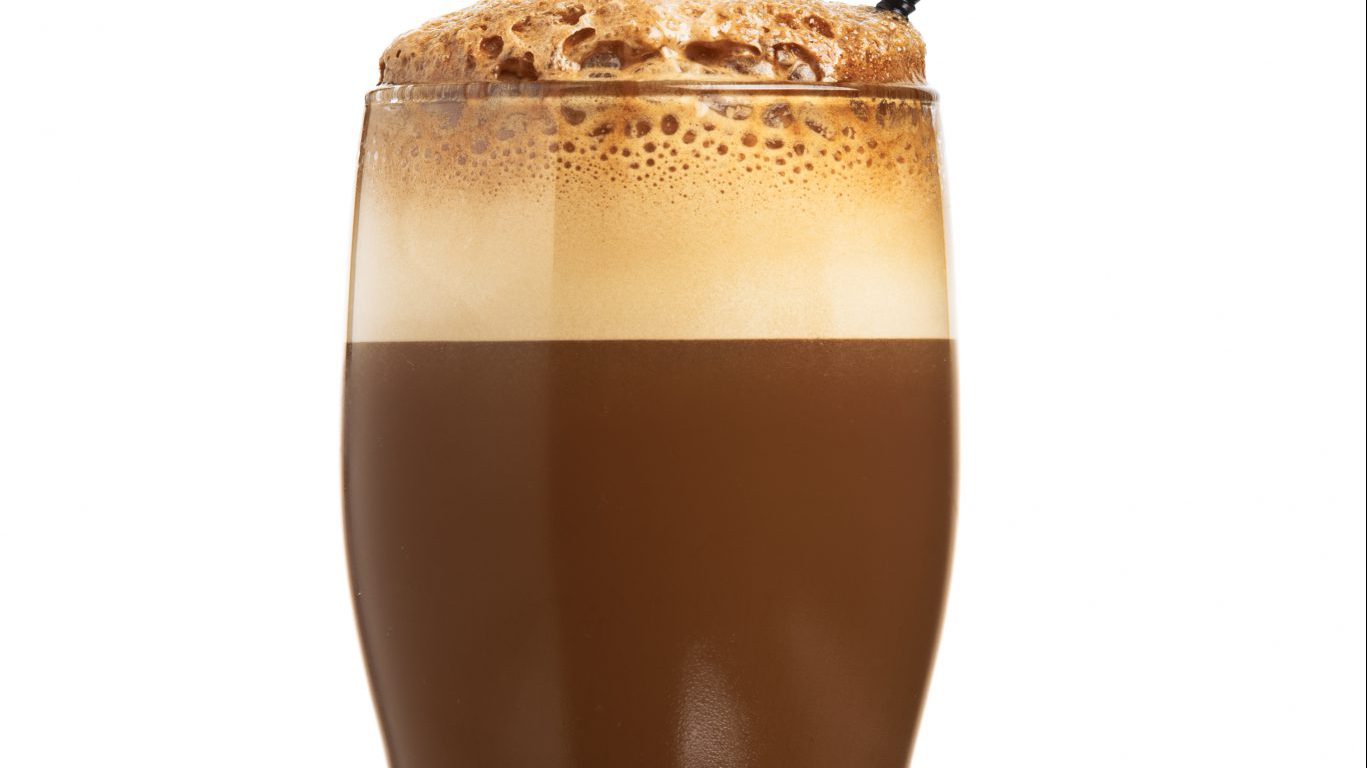
2. Egg creams
If you’ve never had an egg cream, you may assume the carbonated concoction includes eggs and cream — but it doesn’t. So what’s in this Brooklyn-born egg cream? The ingredients are both simple and sweet: milk, seltzer water, and chocolate or vanilla syrup. The person who first whipped up the drink is still up for debate, with Jewish immigrant and candy store owner Louis Auster or retired professor of sociology Daniel Bell the most likely candidates.
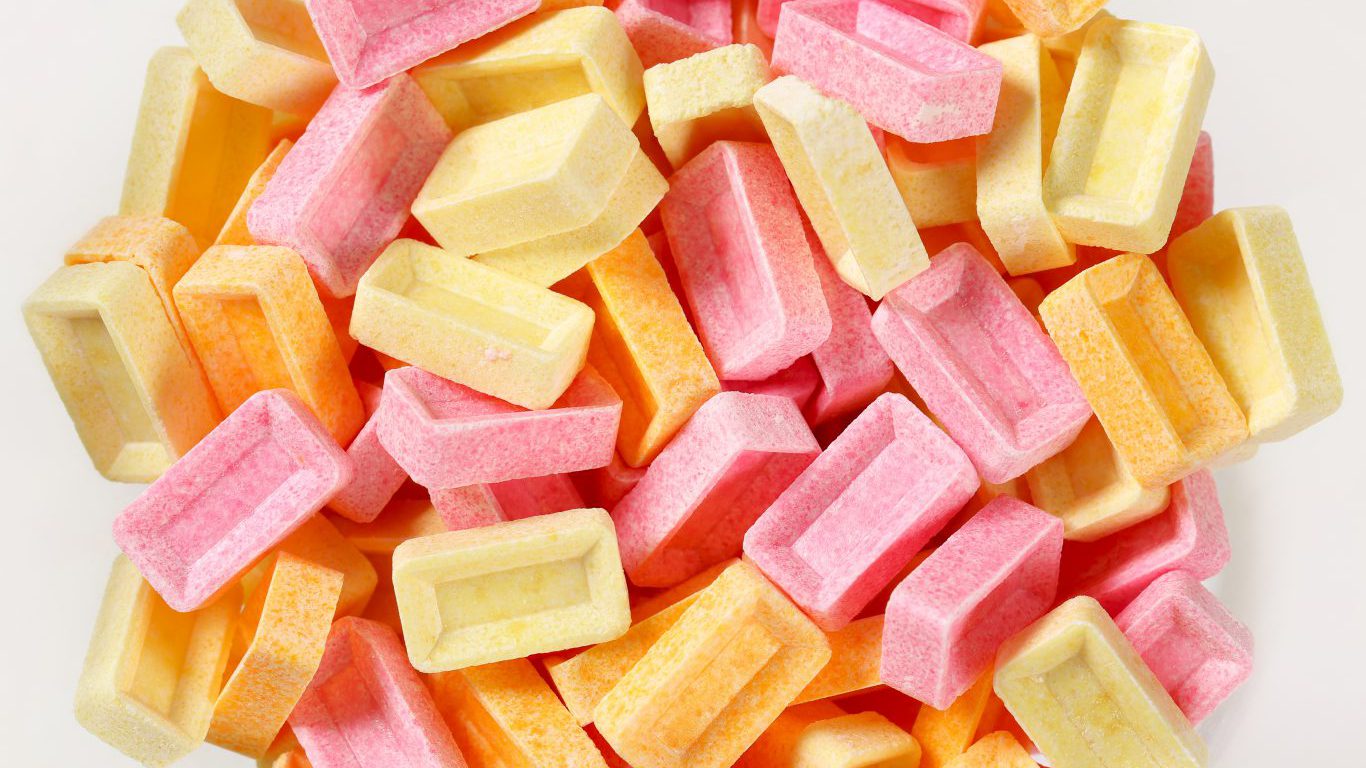
3. Pez
The love for this quirky candy has yet to expire. Invented in Austria by Eduard Haas III in the late 1920s, Pez was originally marketed as a breath mint and named using letters from the German word for peppermint, pfefferminz. It wasn’t until the 1950s that Pez introduced fruity flavors and character dispensers. A Pez dispenser was one of the themes of an episode of the sitcom “Seinfeld’’ and comedian Jerry Seinfeld was the subject of a cover of an issue of TV Guide holding a Pez dispenser. That issue can be found at, where else, the Burlingame Museum of Pez in California.
1930s
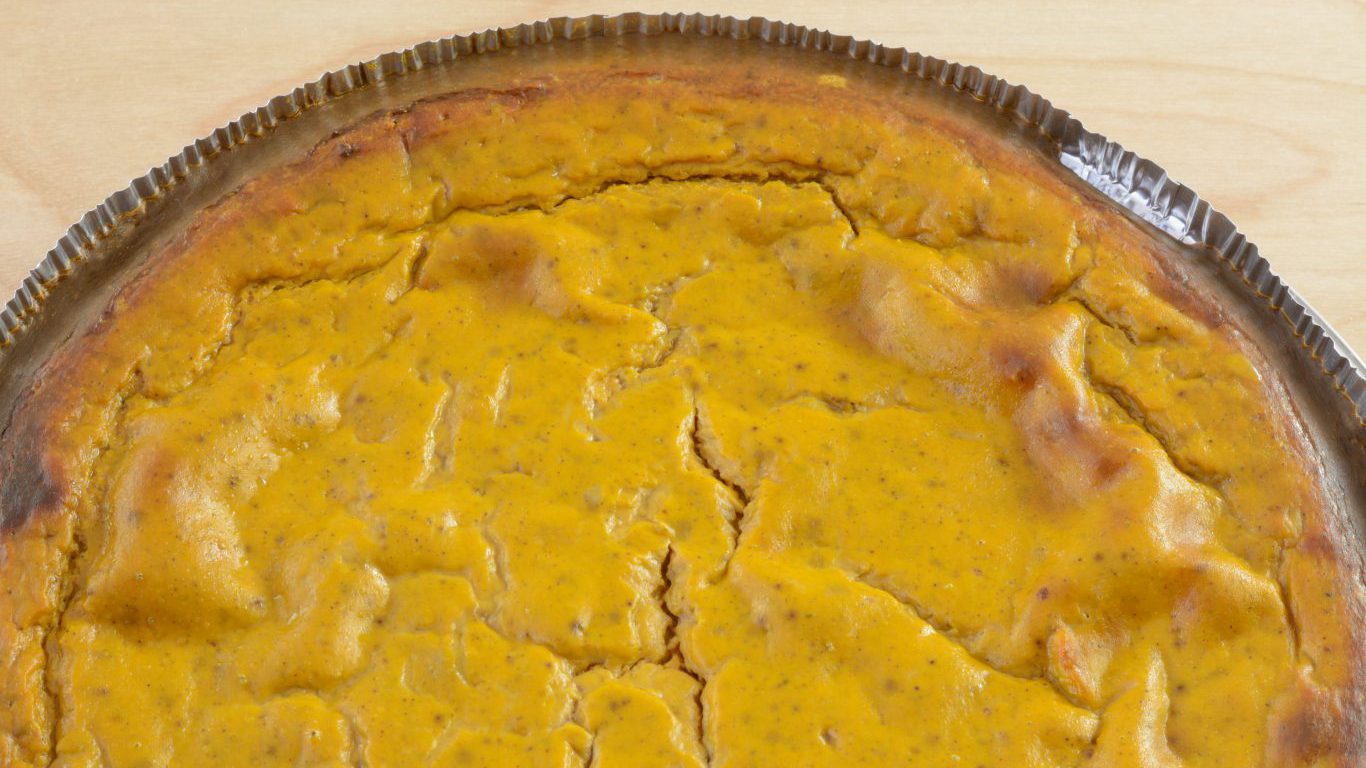
4. Refrigerator pie
Summer is all about cool treats, and what’s better than the creamy, sweet, and cool no-bake pie? The dessert became popular during the Depression because it used cheaper pantry items and no oven. There are dozens of variations. While most pie recipes call for a version of graham cracker or cookie crusts, there are as many fillings as the imagination allows. Some favorites fillings include chocolate, peanut butter, lemon, and cheese to name but a few. And the best part of these pies — other than being delicious of course? No baking required.
[in-text-ad]
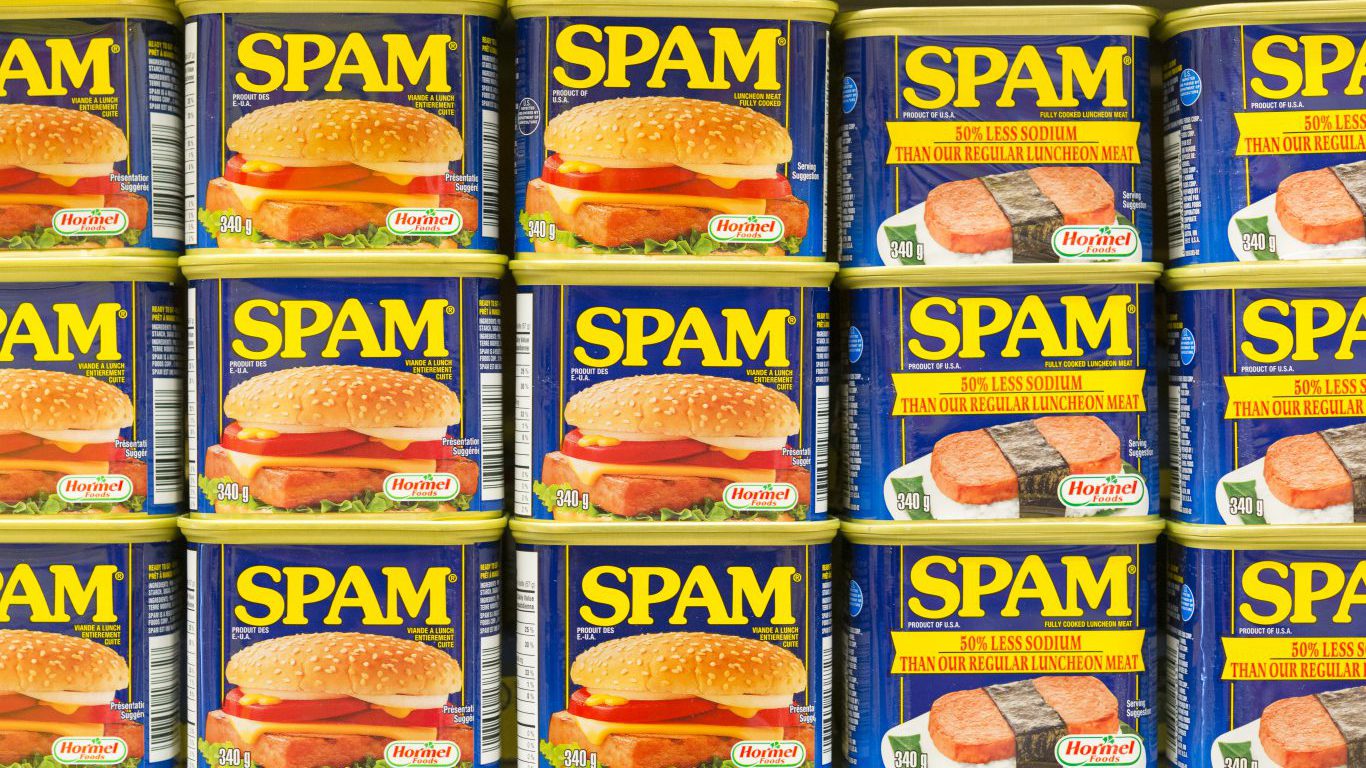
5. Spam
No, not unwanted e-mail. Spam, the canned ham, is one of America’s iconic manufactured foods. Canned ham sustained America’s soldiers in World War II and it was immortalized in a comedy bit by the British comedy troupe Monty Python’s Flying Circus. Spam’s origins began during the Depression. With sales of his canned meat products waning, Jay Hormel relaunched the product with a new name. Spam would hit the market in 1937 and achieve immortality.

6. Twinkies
Twinkies were introduced in 1933 by The Continental Baking Company in Indianapolis, Indiana, and produced through Continental’s Hostess snack line. One of its bakers, James A. Dewar, got the idea for the “Twinkie” while he was delivering one of the company’s products — a cream-filled strawberry shortcake. The machines to make these items were not used when the strawberry season ended, so Dewar came up with an idea to use them to make a snack cake filled with a banana filling. He got the name for the spongy confection from an advertisement he saw for the “Twinkle Toe Shoe Company.” The banana filling was replaced by vanilla creme during World War II because bananas were rationed. The vanilla filling proved so popular that the company never changed back.
1940s
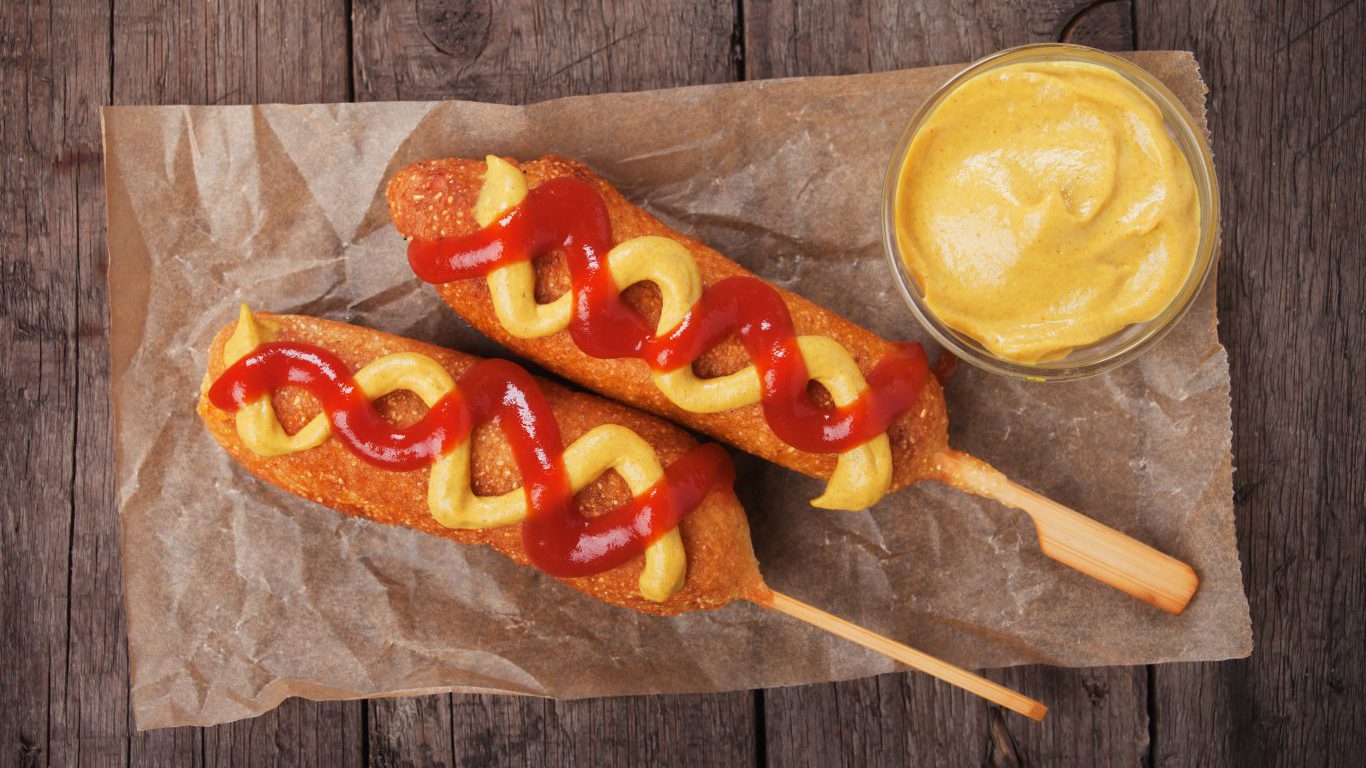
7. Corn dogs/Pronto pups
Americans love their corn dogs, so much so that there’s a National corn dog Day thanks to a group of college aged-boys at Oregon State University. The origin of this festive fair food, however, is less certain. What we know for sure is the corn dog’s predecessor, pronto pups, was first sold in Portland, Oregon in 1941 and created by George and Vera Boyington. As for the modern-day corn dog, Carl and Neil Fletcher, founders of Fletcher’s Corny Dog, are often cited as the first true creators of the corn dog, debuting their product at the Texas state fair in 1942.
[in-text-ad]

8. Potato chip cookies
Potato chip cookies? Yep, you read that right. Records of the first potato chip cookies go back to 1946 with a recipe in the Illinois’ Freeport Journal Standard. For those who enjoy snacks that offer both sweet and salty flavors, this old recipe may be a new go-to recipe for you.
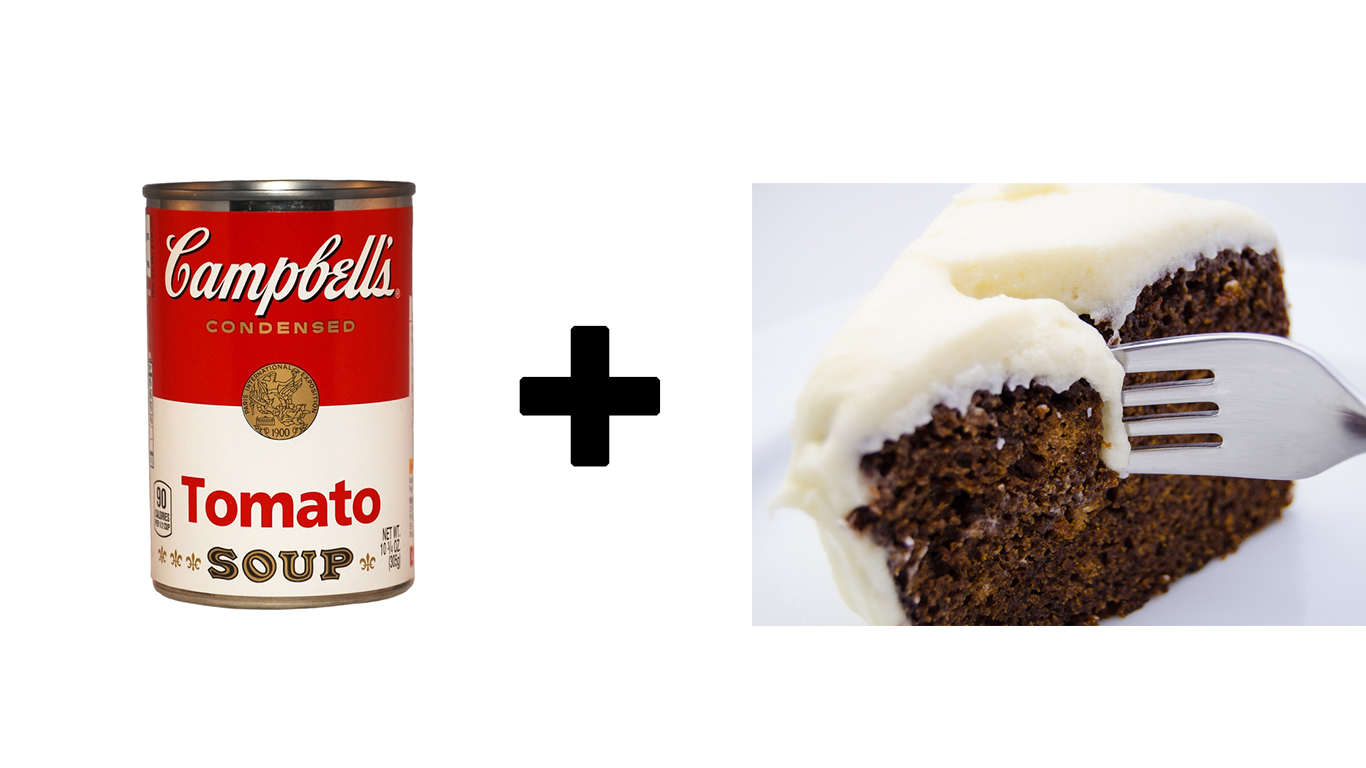
9. Tomato Soup Spice Cake
Just when you thought things couldn’t get weirder after potato chip cookies, we hit you with another quirky recipe — tomato soup cake anyone? Evidently it’s quite a popular request at Campbell’s test kitchens, with one out of every five requests for recipes that use the company’s Condensed Tomato soup asking for the Tomato Soup Spice Cake. And no, you don’t have to be a gastronomic expert to execute this recipe because all you need is a box of spice cake mix, a can of tomato soup, water, eggs, and cream cheese frosting.
1950s
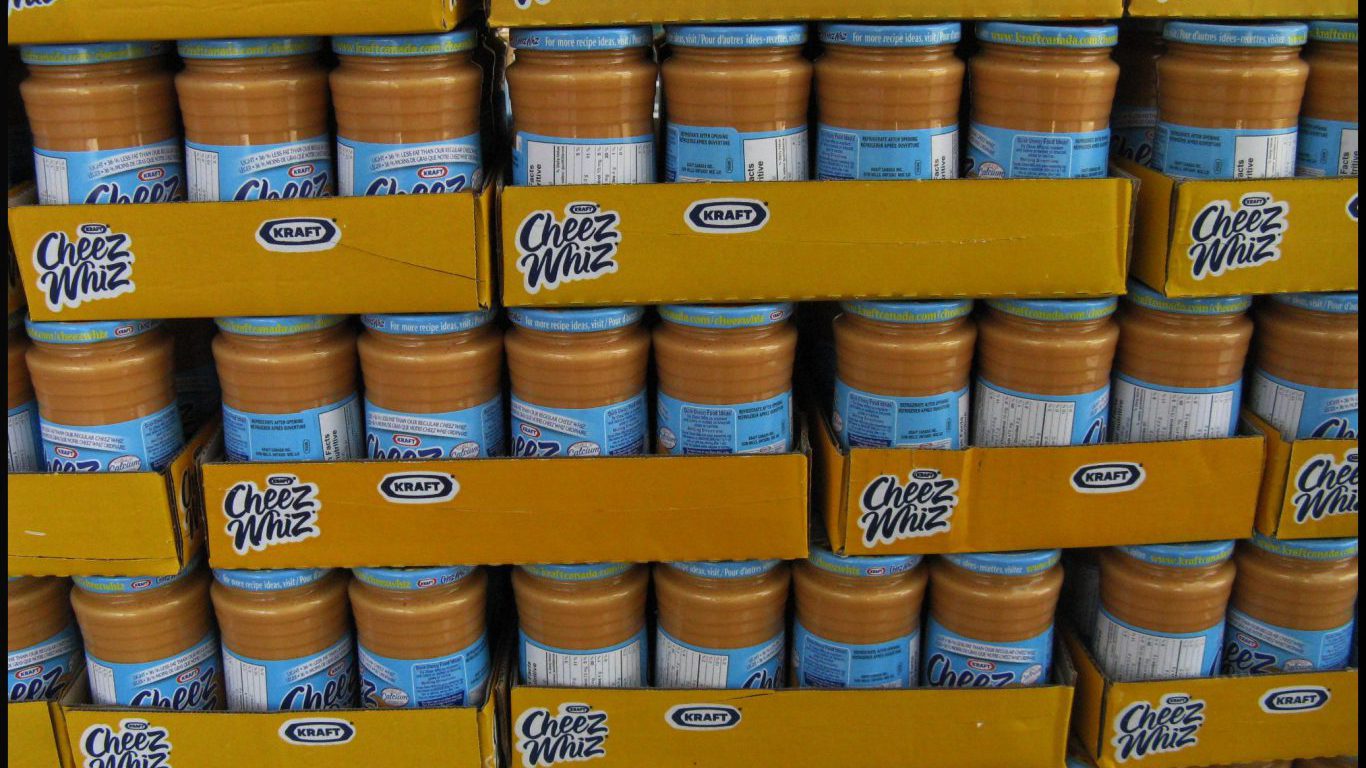
10. Cheez Whiz
Kraft/Nabisco has marketed several “cheese in a tube’’ or “spray cheese’’ products, but none achieved the fame of Cheez Whiz. Cheez Whiz, which reached the market in 1952, was created to eliminate the defects of regular cheese. Kraft wanted to develop a cheese product that wouldn’t disintegrate into a gluey, oily glop when heated. When the company test-marketed Cheez Whiz, housewives said there were 1,304 uses for the product. Food snobs despise Cheese Whiz, but it is indispensable with Philly cheese steak sandwiches.
[in-text-ad]

11. TV dinners
Few images of life from the 1950s were more American than the family plopped in front of the TV watching “Gunsmoke’’ or “I Love Lucy,’’ while eating their TV dinners. The invention of the TV dinner has been attributed to at least three sources, among them Swanson Brothers. Swanson frozen dinners first appeared on grocery shelves in 1954. The company launched a major advertising campaign for the product and coined the phrase “TV dinner.’’

12. Chocolate Covered Ants
Chocolate covered ants were a novelty food in the United States in the late 1950s, according to foodtimeline.org, a website that provides research and information on the history of food. Apparently, imported food shops promoted these delicacies as items to “surprise’’ guests. No doubt, more than one guests were surprised. The chocolate covered critters were eaten as snacks and appealed mostly to men. If people ate goldfish in college, what’s a few chocolate-covered ants between friends?
1960s

13. Pop-Tarts
These sugary pastries are now 53 years old and it’s safe to say their popularity isn’t expiring anytime soon. Why? As of 2014, Pop-Tart sales have gone up every year since the pastry was created in 1964. The original Pop-Tarts were unfrosted and came in four different flavors: Apple currant jelly, blueberry, brown sugar-cinnamon and strawberry. Today, Pop-Tarts can be frosted with sweet icing, filled with anything from fruity jelly to a thick cream cheese, and mimic the flavor of your favorite desserts like a hot fudge sundae or chocolate chip cookie dough. Oh, and we didn’t even talk about Pop-Tarts limited edition category. Watermelon Jolly Rancher-flavored Pop-Tart? Now that’s pretty quirky.
[in-text-ad]
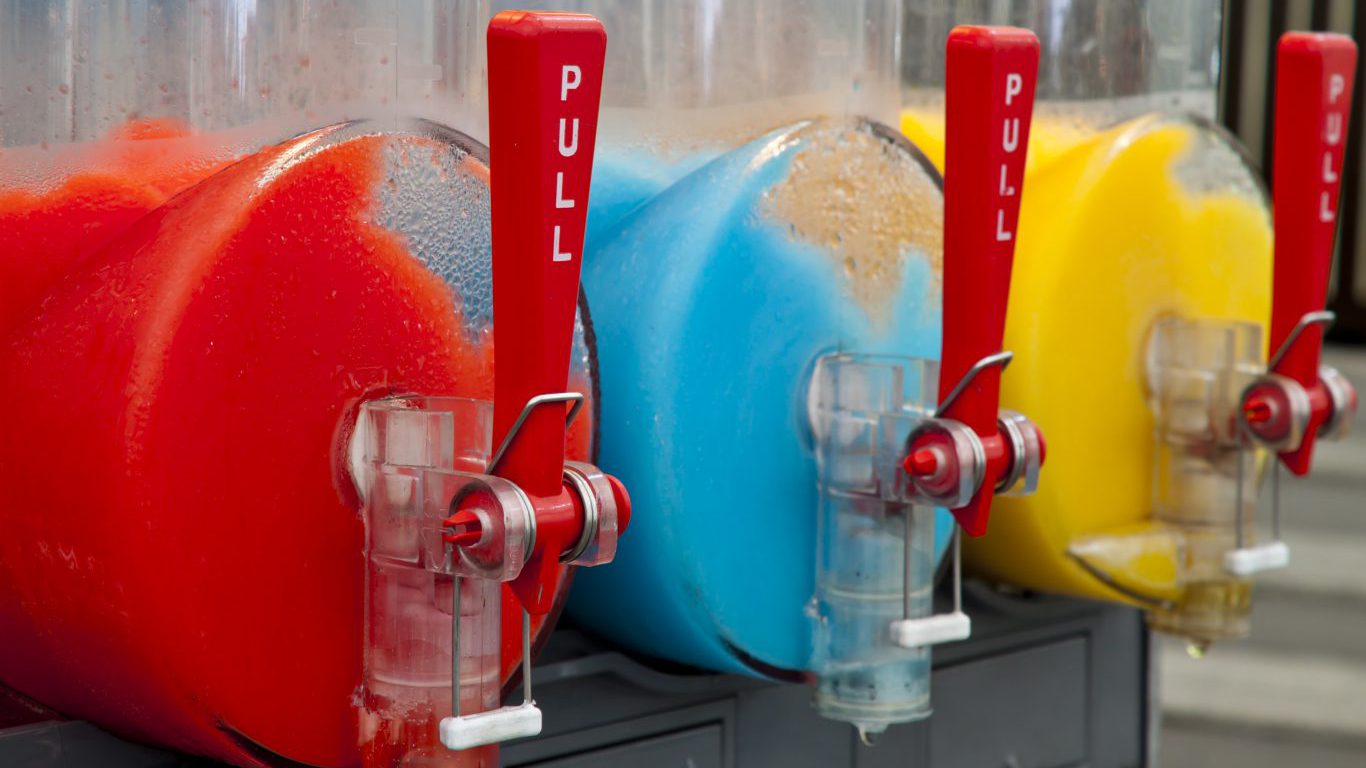
14. Slurpees
“Ouch! Brain Freeze!”
We’ve all experienced this at some point, right? Perhaps this short-lived yet unexpectedly excruciating headache first came about when someone was a bit too eager to swig on their Slurpee. You may be wondering who even came up with such a quirky idea. Believe it or not, the colorful Slurpee is a creation of 7-Eleven, the gas station and convenience store chain. The Slurpee was born in 1966 thanks to Mariano Martinez of Dallas, Texas, who had ambitions to change the face of the classic cocktail.
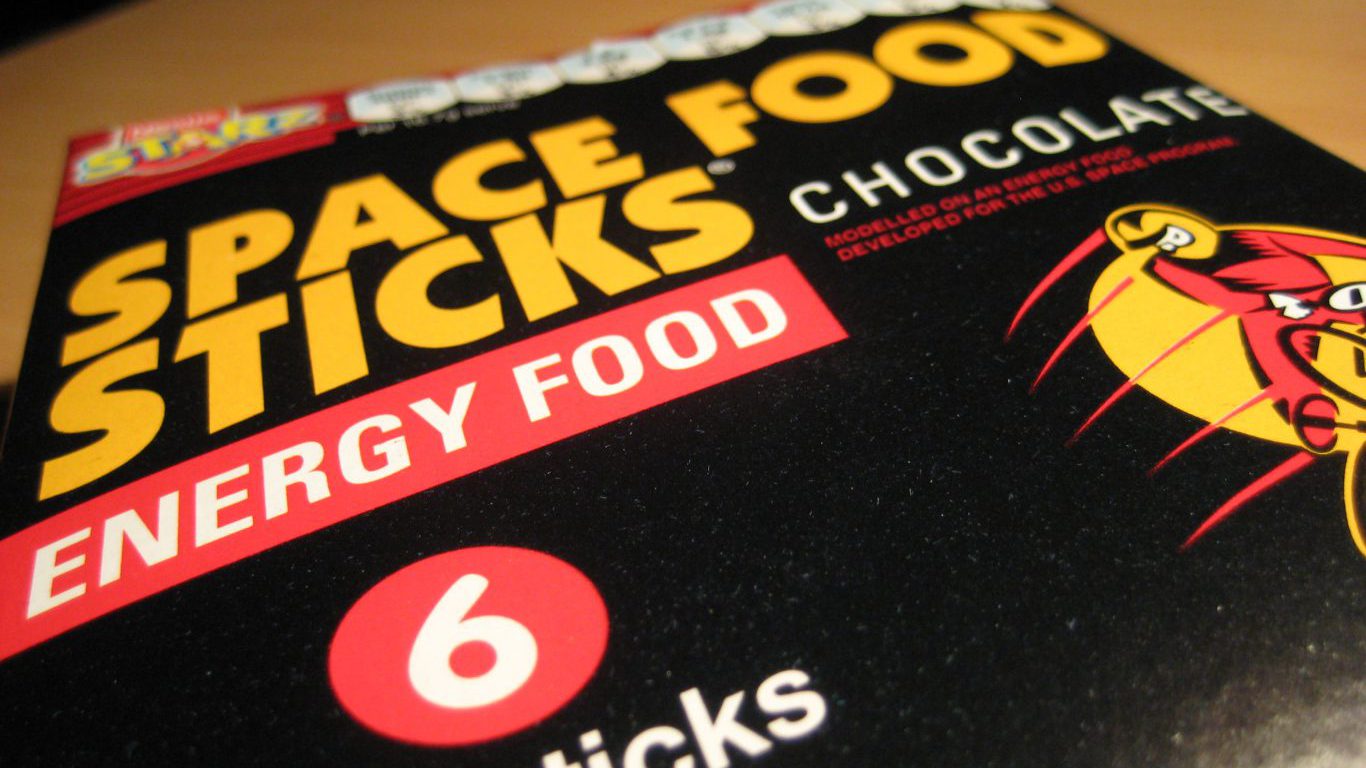
15. Space Food Sticks
These sticks are out of this world! Get it? Joking aside, Space Food Sticks were designed by Pillsbury as food for astronauts. They were released to the public, however, before they went into space aboard Skylab 3. This likely made them even more fun for kids to enjoy. These compact energy sticks — imagine a short Slim Jim (without the meat) with a chocolate-covered cookie base — held the perfect balance between three macronutrients our body needs to thrive: carbohydrates, fat, and protein. The original snack came in a variety of flavors from the rich peanut butter and chocolate to the more refreshing mint and orange. Unfortunately, once the focus shifted away from the space program in the 1970s, Space Food Sticks’ popularity declined. But just like any legendary trend, the space treats made a resurgence. Today, you can find Space Food Sticks today at certain locations ranging from space museums to Disney World.
1970s
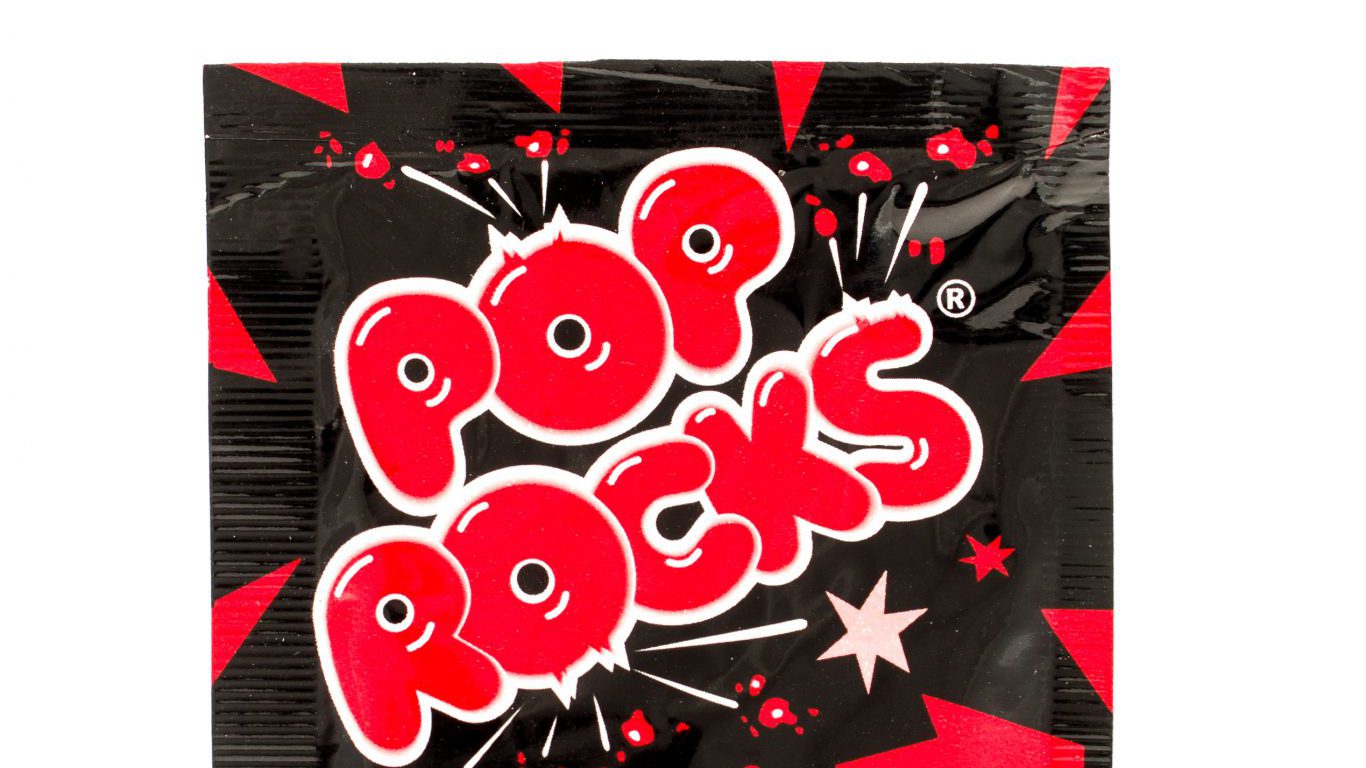
16. Pop Rocks
Pop Rocks were discovered in 1956 by a General Foods chemist, William A. Mitchell. As with many fun food items, the discovery was accidental. While Mitchell tried to design an instant soft drink, he put some sugar flavoring mixed with carbon dioxide in his mouth. It still took General Foods nearly 20 years to figure out how to make the item edible. Pop Rocks were first test marketed in Arizona in February 1976. They became so popular, kids started hoarding them and selling them on a candy black market. Then, an urban legend popped up involving Pop Rocks. Rumors swirled that mixing Pop Rocks with soda caused stomachs to explode. Sales plunged and General Foods dropped the product. Pop Rocks eventually made a comeback, and today they can be purchased online and in stores.
[in-text-ad]
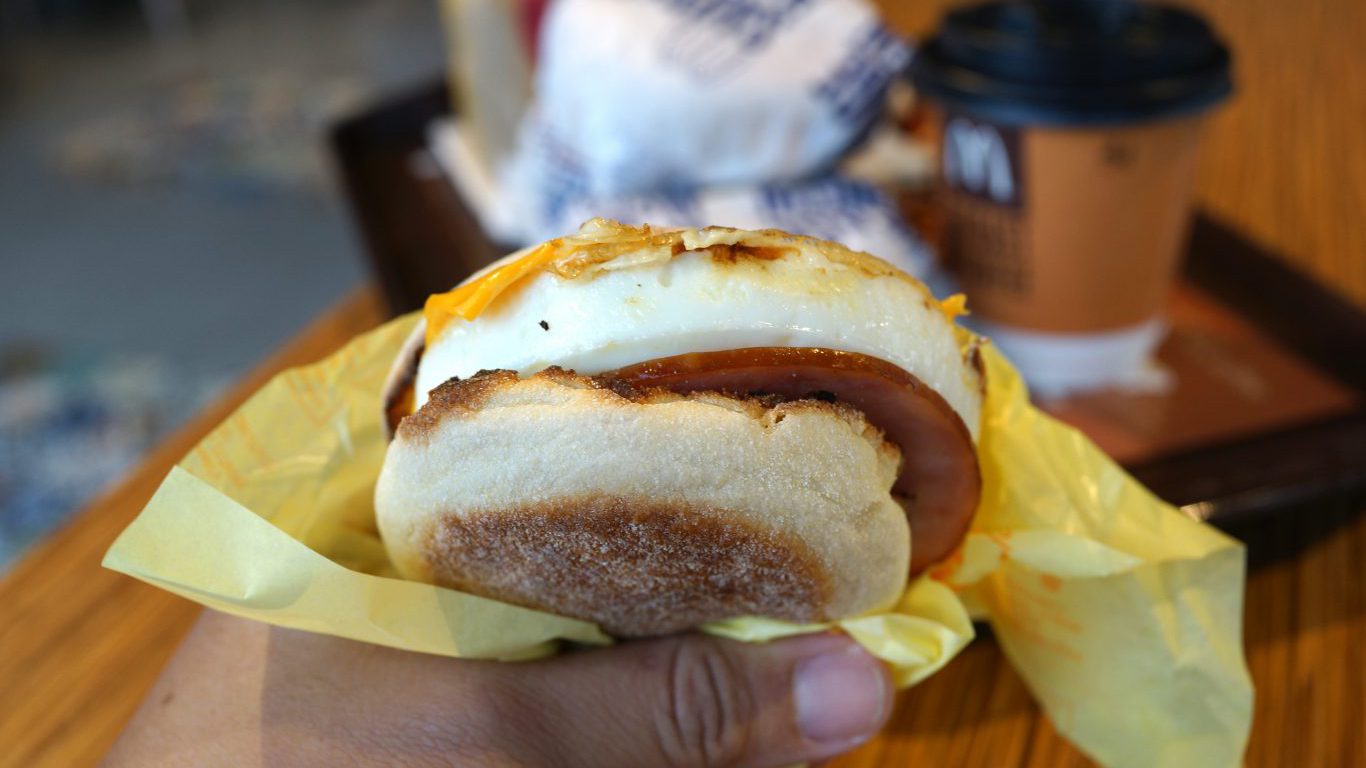
17. McDonald’s Egg McMuffin
McDonald’s Egg McMuffin helped launch the fast-food breakfast market. The Egg McMuffin concept didn’t originate in the upper echelons of McDonald’s management, but with Herb Peterson, a McDonald’s franchise owner in Santa Barbara, California, in 1972. In his autobiography, McDonald’s owner Ray Kroc recalled that Peterson tricked him into trying the first Egg McMuffin, knowing that Kroc might have otherwise dismissed the idea. Kroc balked at the idea of a breakfast sandwich, but once he tasted it, he was sold.

18. Hamburger Helper
Hamburger Helper is a box of pasta that comes with powdered flavor and sauce packets that can be cooked with ground beef to create meals. General Mills introduced the product in 1971 at 59 cents a box. Hamburger Helper was cheap, quick to prepare (20 minutes), and could stretch a pound of beef into a meal for five. The timing was right, too, as beef prices climbed in the 1970s. The popularity of the product, whose mascot “Helping Hand’’ or “Lefty’’ is an animated white glove, soared in the 1970s, leading to varieties such as Tuna Helper, Chicken Helper, and Asian Helper.
1980s
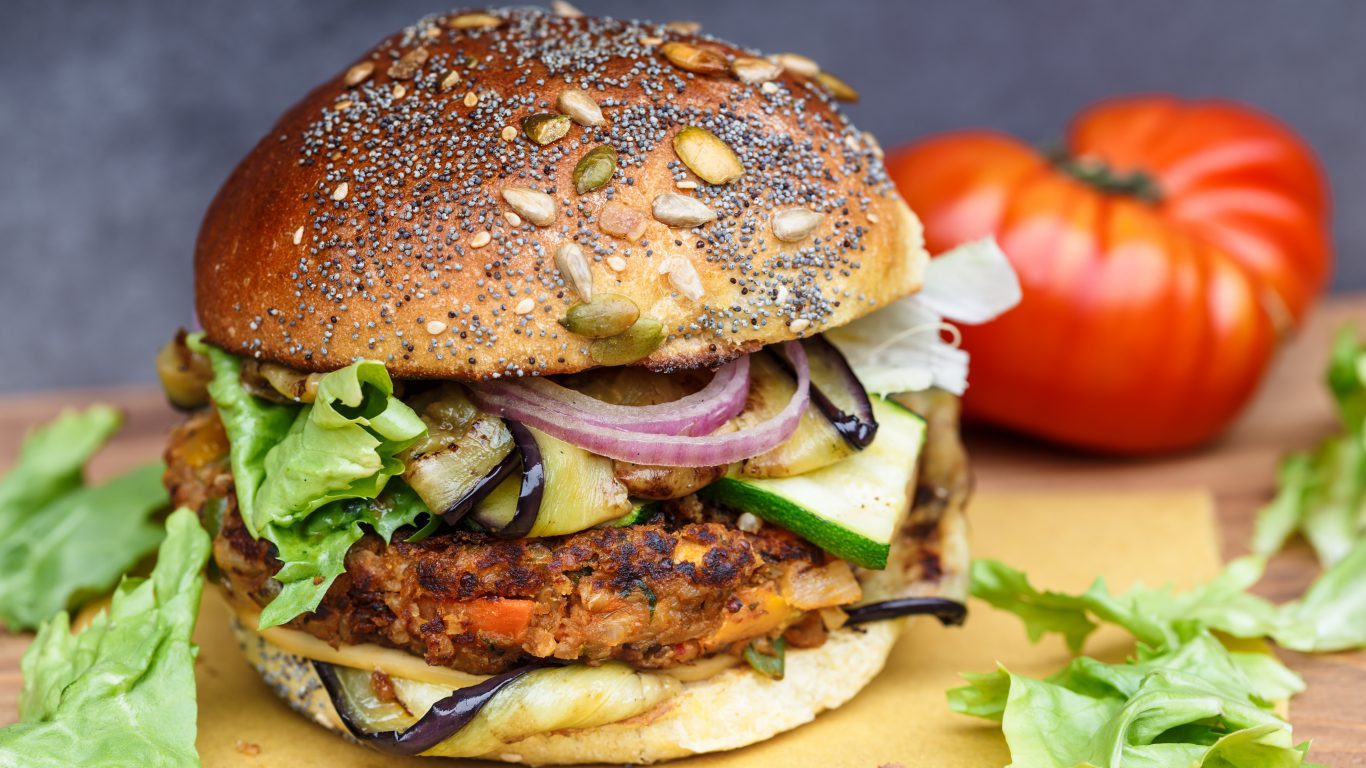
19. Veggie burger
Ever wonder who came up with the idea of making a meatless burger? Well, Gregory Sams, a man passionate about health and wellness opened up his own restaurant in 1968 as well as several health food stores after that. Sams eventually launched the product, VegeBurger, in 1982. What prompted the creation of the veggie burger is the real kicker of the story.After his trip through Colorado’s Rocky Mountains, Sams contracted hepatitis and was forced to stay home and rest. During this time, his brain ran wild, dreaming up new ideas for his latest company. That’s when the idea of making an alternative hamburger for vegetarians like himself was born.
[in-text-ad]

20. Turducken
Carnivores will appreciate this meal, because this dish takes a stuffed turkey to the next level. The gargantuan turducken is none other than a large deboned turkey stuffed with a deboned duck, which is stuffed with a deboned chicken. Oh, and each layer is packed tightly with stuffing. While the true beginning of this heavily stuffed bird is is unclear, it’s believed that Cajun chef Paul Prudhomme popularized it in the 1970s. However, the meat masterpiece did not earn its title as turducken until 1986.
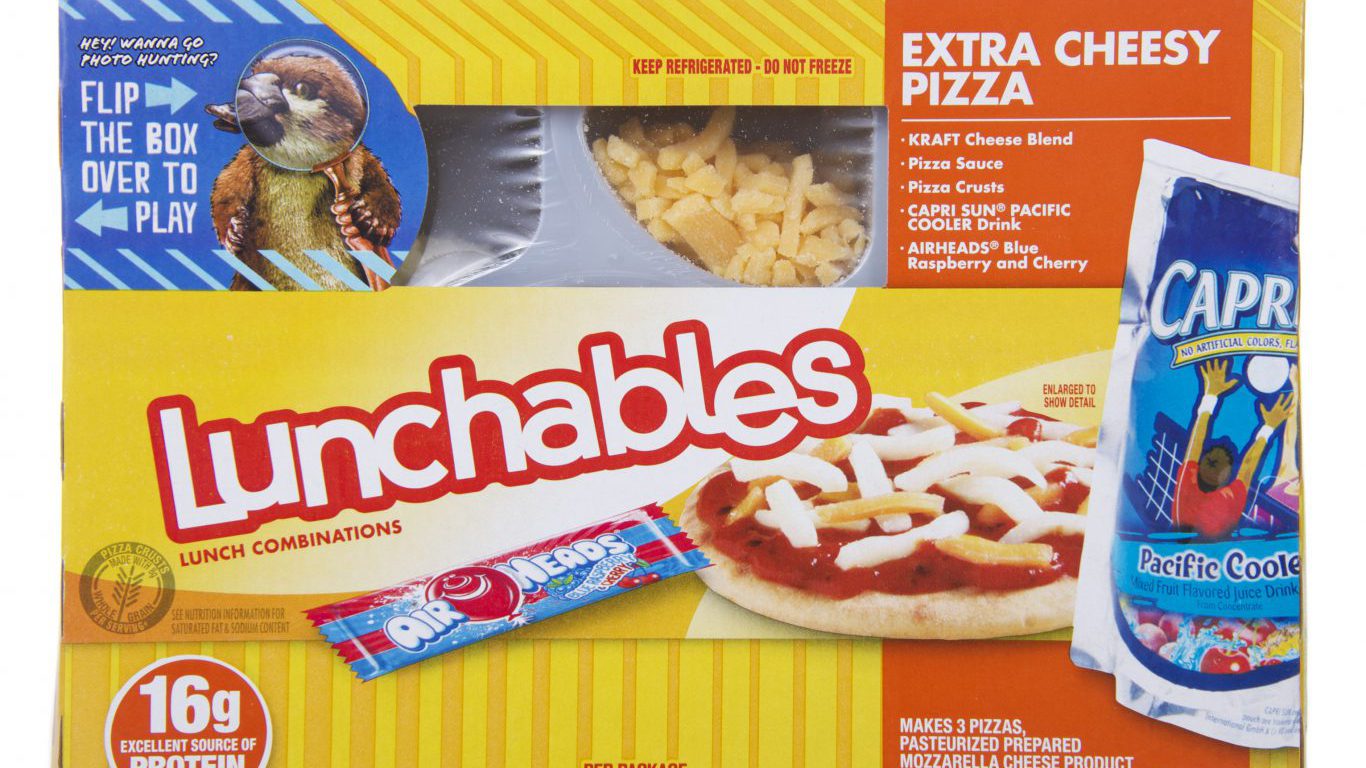
21. Lunchables
Who isn’t familiar with the classic yellow box? These packaged meals of faux pepperoni pizza and other cracker-based varieties can be found in children’s lunchboxes everywhere. Oscar Mayer debuted Lunchables in 1988, and the convenience of having an already packed lunch for the kids piqued parents’ interest nationwide. Just 10 years after the product’s introduction, sales of Lunchables reached $530 million. Due to concerns about the poor nutritional value of Lunchables, the company introduced — somewhat — healthier versions in 2007. But are they really that much healthier?
1990s

22. Broccolini
Broccolini is sometimes called baby broccoli, but is actually a cross between broccoli and gai-lan, or Chinese broccoli. Broccolini grows in slender stalks, each topped by smaller and looser clusters of florets that resemble broccoli florets. Broccolini’s appeal stems from America’s love of diminutive vegetables that don’t require cutting.
[in-text-ad]

23. Tofurkey
Vegetarians and vegans of the world, unite! Tofurkey is a vegetarian turkey replacement that is served during holidays such as Thanksgiving and Christmas when turkey is usually served. It is made from a blend of wheat protein and organic tofu. It is served in the form of a loaf or casserole of vegetarian protein, usually made of tofu (soybean protein) or seitan (wheat protein). Tofurkey is oven-roasted or baked.
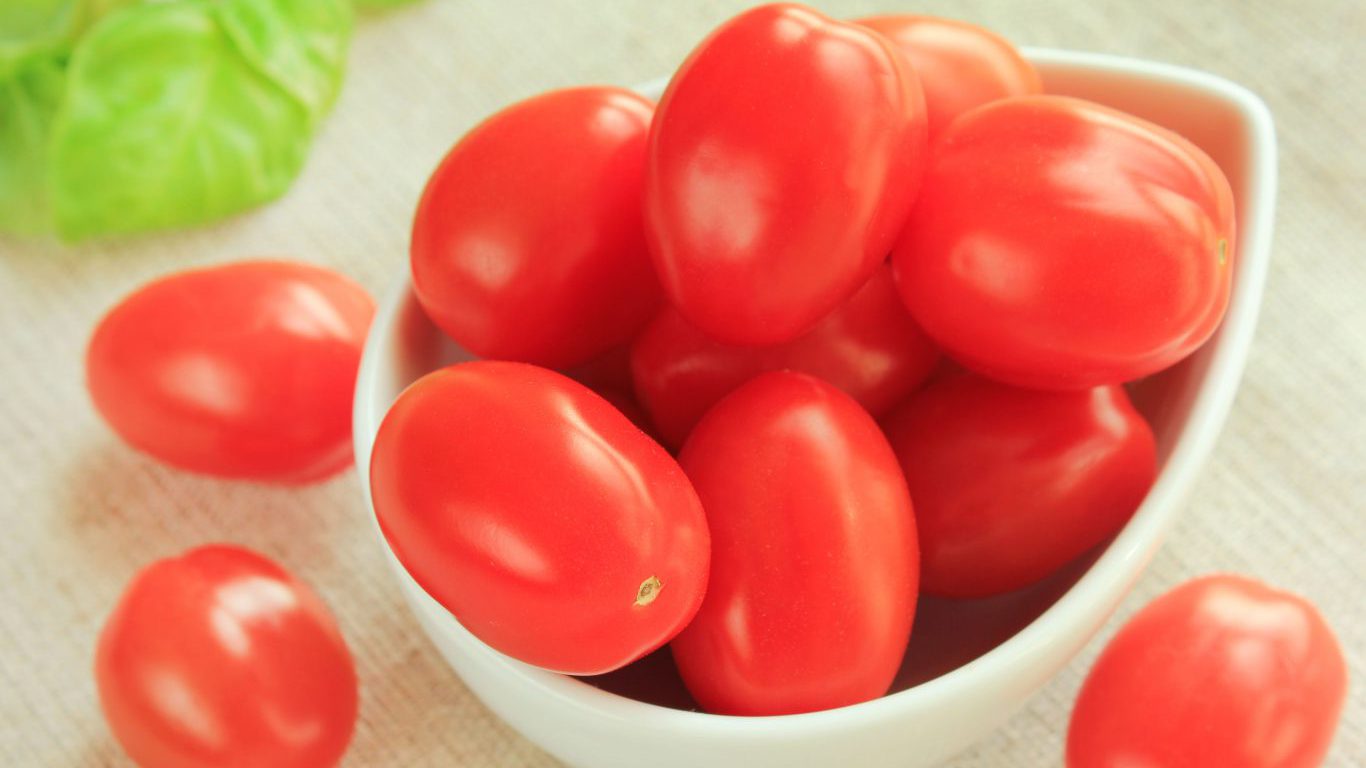
24. Grape tomatoes
Grape tomatoes, not to be confused with cherry tomatoes, had suffered from years of flavorless, thick-skinned toughness, but they improved their texture and taste and have found their niche. Grape tomatoes are believed to have originated in southeast Asia. They are shaped like oval tomatoes but are small and not as sweet as their cherry tomato brethren. Grape tomatoes last longer than cherry tomatoes and their popularity has risen because they are hardier and less fragile to pack and transport.
2000s
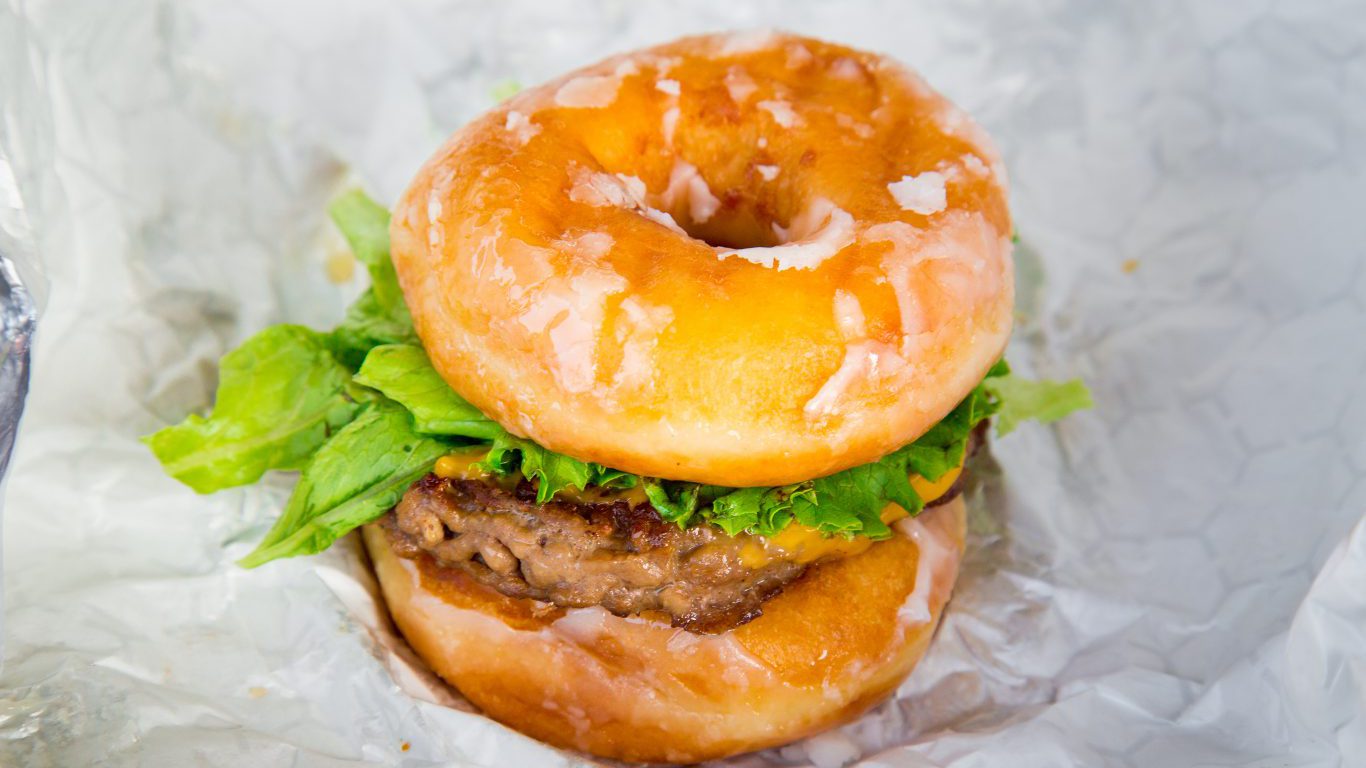
25. Doughnut burger
The doughnut burger is also called the “Luther Burger,” a bacon cheeseburger served on a Krispy Kreme doughnut bun. Another food named for a famous person, the Luther Burger is named after R&B singer Luther Vandross. The doughnut hamburger was created at a pub in Decatur, Georgia. In 2012, celebrity chef and restaurant owner Paula Deen claimed to have invented the burger, but her sons later admitted it was not her recipe. How many calories in this so-called Craz-e Burger? A heart-stopping 1,500.
[in-text-ad]

26. Kool-Aid pickles
Sometimes a combination of contrasting tastes can work, like prosciutto and melon. This could be true also for Kool-Aid pickles, sometimes called koolickles. Kool-Aid pickles begin life as any pickle. To transform ordinary pickles to Kool-Aid pickles you just need to marinade them for some time in any flavor Kool-Aid, like cherry, tropical fruit, or strawberry. The result is a sweet-sour taste that kids love. And how good are they really? That might depend on whether aficionados of the sweet-sour pickle drank the Kool-Aid.

27. Cake pops
Food on a stick is nothing new to Americans, and cake pops, which debuted in 2007, are the more recent iteration of this trend. Cake pops are made with cake crumbs mixed with icing or chocolate and formed into small spheres or cubes before they are coated with icing, chocolate, or other creams. Cake pop creation is credited to Angie Dudley, the proprietor of Bakerella.com blog. The item’s popularity was boosted by Dudley’s cookbook published in 2010.
2010s
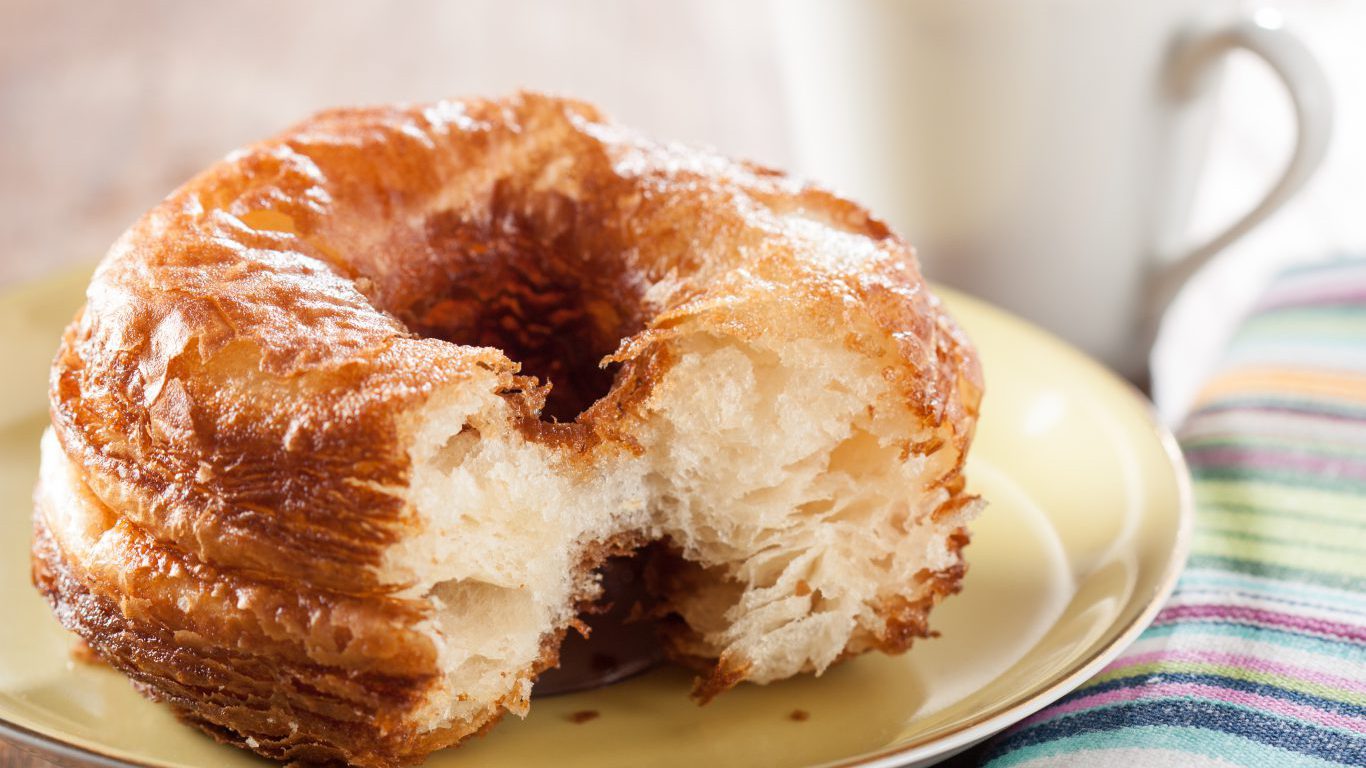
28. Cronuts
We know what you’re thinking — what in the world is a cronut? This hybrid pastry is a cross between a flaky croissant and a dense doughnut, and it hails from the Big Apple. Chef Dominique Ansel released this quirky delicacy to the public in the spring of 2013 after more than 10 recipes and two months of trial and error. One of our team members here at 24/7 Wall St., Alexander Kent, has actually tried one of Ansel’s Cronuts. His account? “It’s a little doughy like a doughnut but flakes a bit and has the buttery croissant taste.” Interested? So are we!
[in-text-ad]
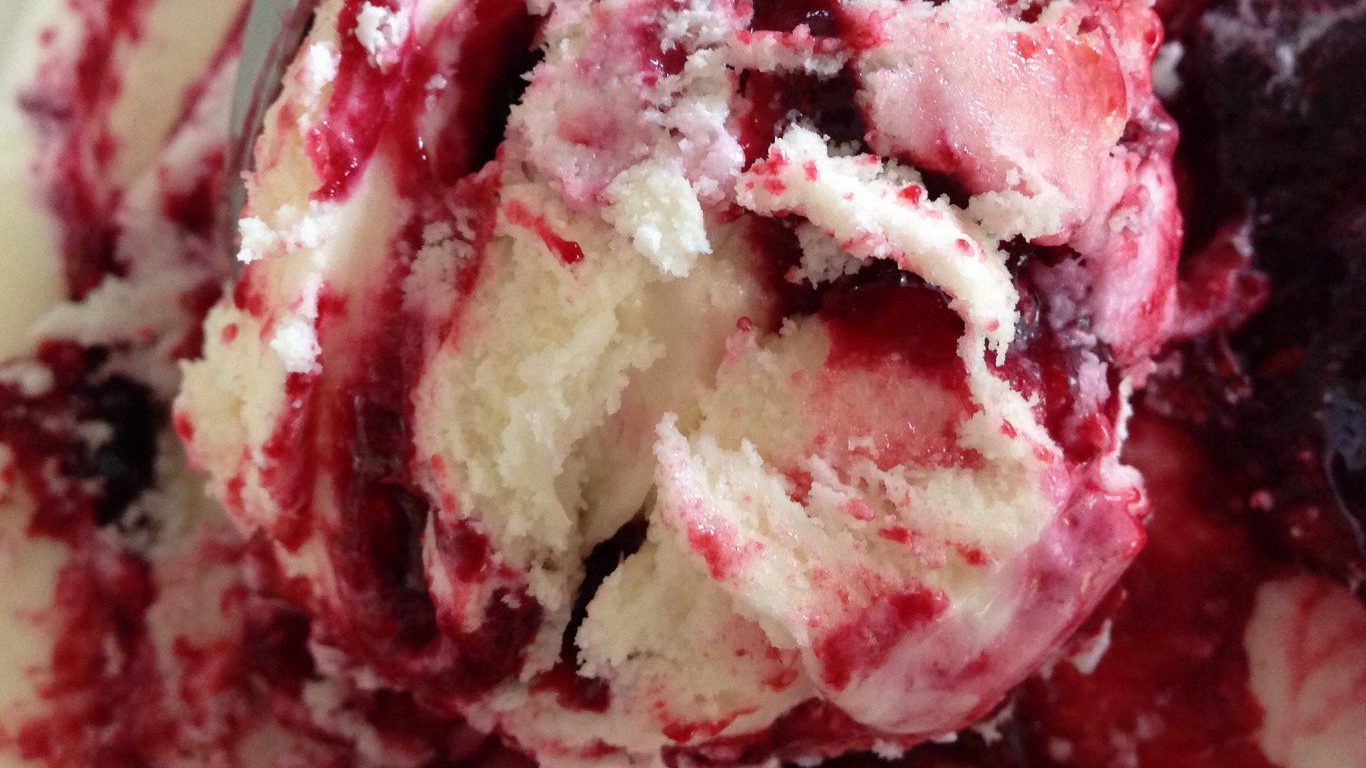
29. Vegetable ice cream
Didn’t your mother ever tell you to eat your ortaggi? Probably not, unless your mother is Italian. In Italy, ortaggi means vegetables, and now there’s even an ice cream brand named Ortaggi. This vegan-friendly ice cream, which debuted in 2014, is made from vegetables, fruit juice, herbs, and agave syrup. Flavors range from sweet and refreshing combos such as red pepper with peach and carrot with mandarin and ginger. The company seems to have suspended operations. Other smaller ice cream producers are experimenting with vegetables in their ice cream blends. For example, Jeni’s ice cream, based in Columbus, Ohio, offers flavors with vegetables mixed in such as sweet corn with black raspberry and sweet potato with torched marshmallows in grocery stores nationwide.

30. Unicorn Frappuccino
The most recent and arguably one of the quirkiest foods on this list is Starbucks’ infamous Unicorn Frappuccino. This obnoxiously vibrant, sweet then sour Frappuccino only lasted on the market for a few days in April 2017. The hype behind products marketed as a unicorn food grabbed the public’s attention, however, to most the Unicorn Frappuccino was an utter disappointment. There were legal problems for Starbucks related to the beverage. A Brooklyn cafe sued the coffee giant claiming Starbucks infringed on the cafe’s trademarked latte drink.
Thank you for reading! Have some feedback for us?
Contact the 24/7 Wall St. editorial team.